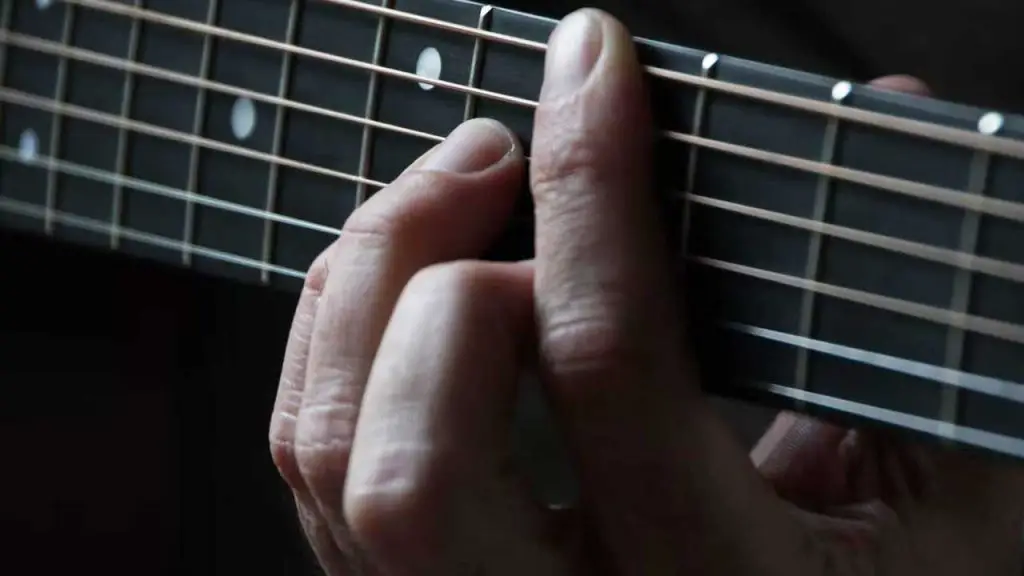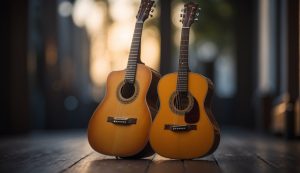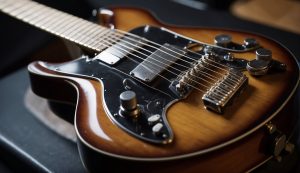Folkstrings.com is reader-supported. When you buy through links on our site, we may earn a small commission.
Caring for your guitar the right way will help extend its life. You first need to be familiar with the guitar style to do this. Among the 12 types, you most likely have an acoustic guitar as it’s the easiest to understand, handle, and learn.
However, you should not only care for your guitar but also be aware of your health while learning or playing it. If you’re a newbie with many guitar health-related queries, continue reading below.
Table of Contents
- Why Do My Fingers Feel Numb After Playing Guitar?
- Do Guitar Calluses Go Away?
- How to Stop Guitar-Playing Forearm Pain?
- I Have Left Shoulder Pain After Playing Guitar; What Should I Do?
- Can Playing Guitar Cause a Pinched Nerve?
- I Have Chest Pain from Playing Guitar; What Should I Do?
- Does Guitar Playing Build Muscle in Any Parts of the Body?
Why Do My Fingers Feel Numb After Playing Guitar?
Finger pain, calluses, and numb fingertips are typical when learning to play guitars. Many beginner guitarists consider them the rite of passage that proves their endless hours of practice.
There are many reasons why you experience your fingers feel numb after playing guitar, such as:
- Too much pressure when holding the strings and neck of the guitar, causing cramps
- Damage to the top layer of the skin from irritation and repetitive contact with high-action strings
- Tendon strain and inflammation from excessive guitar playing, isotonic movements, and improper posture
- Beginning stages of callus development
- Unsuitable guitar (not for beginners)
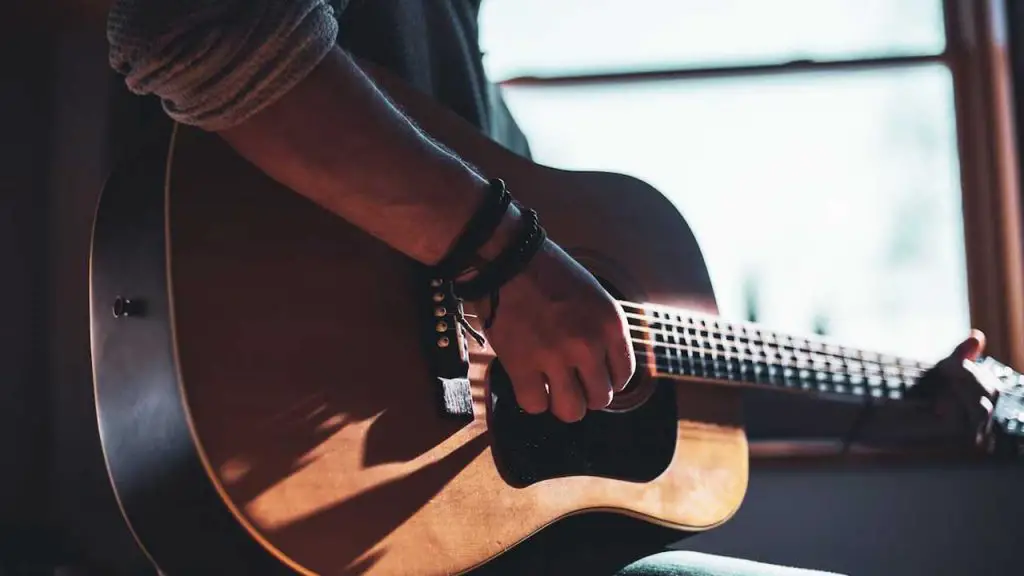
It’s inevitable, but taking your time learning and playing slow and steady will help you get used to it. Let your fingers develop thicker skin and calluses.
You can also bring your instrument to a knowledgeable technician and ask them to adjust the guitar action to make the strings easier to press down.
Although it’s normal to feel numbness in your fingertips even with a proper warm-up, if it becomes unbearable, immediately seek advice from a doctor or hand specialist.
Do Guitar Calluses Go Away?
Guitar calluses are not permanent and will eventually disappear in one to two months if you stop playing.
Usually, newbies get painful blisters on their fingertips, but as they heal and with constant practice, the skin thickens and hardens within two to four weeks to form calluses. Calluses may not look attractive, but they protect you from friction and soreness so you can freely play the strings without pain.
Guitarists believe getting calluses is necessary. But that doesn’t mean you can’t play without them.
Note that not everyone develops calluses. They also depend on the following:
- Guitar and string type
- Frequency of guitar practice
- Music and technique variety
- Fingers and skin toughness
If you don’t like calluses, take a long break from practicing until they gradually disappear. You can also use lactic acids to moisturize and soften the skin, then rub the dead skin cells away with a pumice stone.
If you don’t want to stop playing the guitar, use low action and light gauge strings. But be aware, these string types are sharp and can cut your fingers.
Here are more tips to reduce calluses or to make guitar calluses go away:
- Switch to classical, non-steel string acoustic, or electric guitar.
- Use rubber finger caps or protectors.
- Shift to nylon or coated guitar strings.
- Purchase a fitted golf glove.
- Avail of a slide guitar.
- Convert to lap steel guitar.
- Do regular hand treatments with petroleum jelly and other moisturizing products.
If you’re still searching for a good guitar, the Fender CD-60S is the most popular today with its simple look, clean sounds, and beginner-friendly bundle.
How to Stop Guitar-Playing Forearm Pain?
Also known as lateral epicondylitis, tennis elbow is a condition that affects your upper forearm caused by over-practice and too much pressure on the fretboard. The symptoms of this injury are pain when you lift or bend your arm and hold or twist an object.
When you feel this ache, it’s best to see a doctor and get a check-up. While waiting, you can do the following:
- Stop playing the guitar immediately if you feel any pain.
- Warm up with light arm and hand stretches before playing.
- Do not forget to do cool-down exercises after playing.
- Use ice cubes to reduce forearm swelling.
- Always drink plenty of water after playing to flush toxins from your muscles.
- To ensure you’re not abusing your muscles, take two to three days off before going back to practice.
- Be in a natural position. The right side of the guitar should sit on your leg, while the neck should come outward.
- Don’t bend your wrist at a sharp angle when you are fretting.
- Your forearm, back of the hand, and wrist must be as straight as possible.
- Wear a brace or splints to minimize movement and reduce pain.
I Have Left Shoulder Pain After Playing Guitar; What Should I Do?

First, identify the cause of your shoulder pain. See the common causes below, along with their suitable remedies.
Improper Posture
Improper posture is usually the cause of shoulder pain.
- Keep your shoulders and wrist relaxed and in a natural position while playing.
- Sit in a comfortable chair (or with a footrest) to properly hold your guitar.
- Put the guitar close to your stomach.
- Never sit with your legs crossed or play on your knee.
Inconvenient Straps
Traditional guitar straps force your body to bear the instrument’s weight.
- Adjust the strap a little higher.
- Get a high-quality leather strap or a wide one with thick shoulder and neck padding.
- Invest in an ergonomic guitar strap like the hip or double-shoulder harness type strap.
Heavy Guitar
If you play guitar while standing and experience neck and shoulder strain, it must be the weight of your guitar.
- Switch to a lighter guitar like the Stratocaster style for electric and ¾ sized guitar for acoustic.
- Take frequent breaks or sit down while playing.
- Do neck, shoulder, and back exercises and stretch to build muscles in those areas.
Over-practicing
You may see being absorbed in practice as a commitment to learning. But practicing at regular intervals is still best for you and your guitar.
- If you practice guitar for 30 minutes or more, take a break of at least 10 to 15 minutes. It’s to relax your body and avoid overtraining.
- If there’s severe shoulder pain, take some painkillers and do a cold or hot compress.
- Don’t play until your shoulder is fully healed to prevent it from recurring. It’s also to avoid injuries like Tendonitis (swelling of tendons) and Bursitis (irritation of the bursae surrounding bones, muscles, and tendons near the joints.)
Can Playing Guitar Cause a Pinched Nerve?
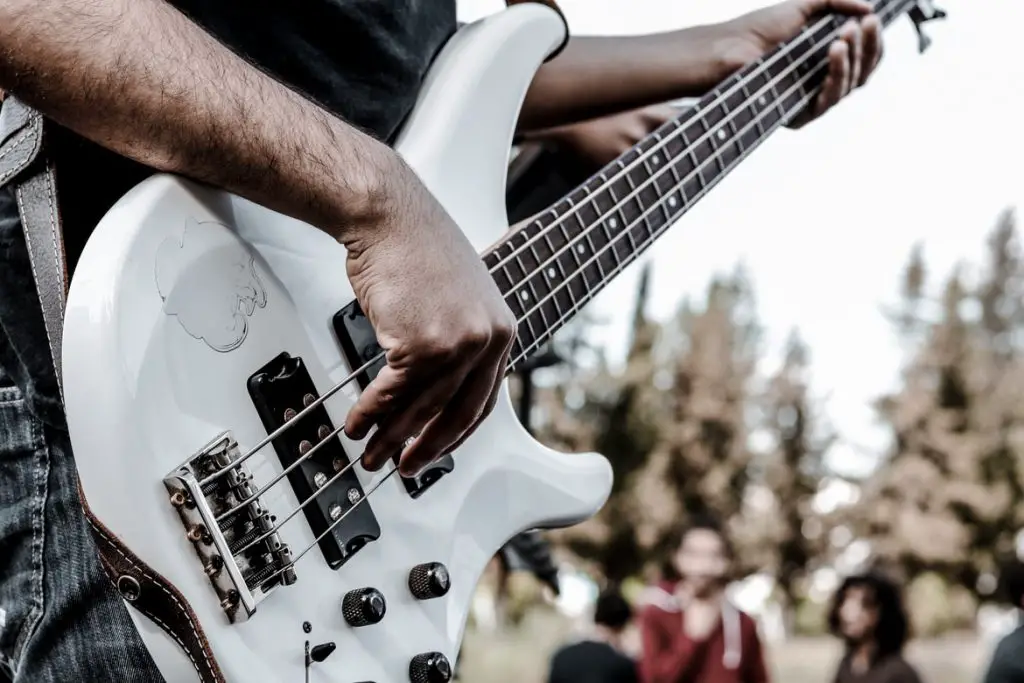
Yes, you can get a pinched nerve through guitar-playing. Guitarists experience two common injuries, with the nerves being the most affected.
First is Carpal Tunnel Syndrome, a condition where players feel numbness, weakness, and tingling in the thumb, index, middle, and ring fingers.
Too much pressure on the nerves that run through the wrist causes this injury. You can avoid carpal tunnel syndrome by relaxing your hand when playing the guitar or doing housework.
Next is the Cubital Tunnel Syndrome, which has similar symptoms to the first injury but with severe pain in the forearm. This injury occurs when the ulnar nerve (funny bone) that runs along the inner elbow is over-stretched. Avoid bending your elbows frequently or putting force on them for long periods to avoid this risk.
Another condition that can damage not only the nerves but also the skin and blood vessels is exposed skin tissue caused by blunt trauma. These injuries take a toll on the body, preventing players from using their instruments for a long time. So, it’s best to get tested when you start to feel symptoms.
I Have Chest Pain from Playing Guitar; What Should I Do?
Improper posture also results in chest pain. Even a non-guitarist who sits at their desk all day experiences tightness in their chest. For guitarists, it usually occurs when their ribs move higher than others in doing such movements.
Many experienced guitarists on various forums remind others to have proper posture, do stretching, have footstools, and place a towel or cushion on the part of the guitar that touches the chest.
Follow the simple exercise below to reduce chest pain:
- Stand in the middle of the door frame, then step back once.
- Place your hands on either side at shoulder height and begin to lean back and forth five times.
- Raise your right hand about a foot, lower your left hand about a foot on the door frame, and lean into the doorway and back five times.
- Reverse your hands’ position. Do it five times.
- Go back to your original position. Lean into your doorway and back again five times.
- The last step is called “door frame pull-ups.” Stand in your door frame in a proper position.
- Hold the door frame with palms facing back and at shoulder level.
- Extend your arms, lean back, and then pull your body towards the door like an actual pull-up exercise.
- Repeat the previous step five more times.
Does Guitar Playing Build Muscle in Any Parts of the Body?
Playing guitar doesn’t only upgrade your musical skills. It’s also a good fitness exercise to strengthen your arms and hands. Continuous practice will make your hands more flexible, along with a more robust shoulder blade. In terms of muscles, the triceps, biceps, and forearms will be the most trained and developed.
You’ll mostly use your picking arm’s triceps in playing guitar. Repeatedly flexing your biceps is a good workout as well. The constant movement is almost the same as lifting weights.
However, like building up muscles in a gym, it will also take months to define those muscles.
Author Profile
-
Daniel Johnstone is an English writer with a love for stringed instruments from around the world.
He shares his love for these instruments through his writing for folkstrings.com, a website dedicated to all things related to folk string music.
Daniel's passion for music started at a young age, and he has since become an accomplished musician, playing guitar, cavaco, and recently, the harp.
His dedication to learning and sharing his knowledge of stringed instruments is evident in his insightful and engaging blog posts. Whether you're a seasoned musician or a beginner, Daniel's writing is sure to inspire and entertain you.
When he's not playing music or writing, you can find Daniel exploring new instruments and seeking out new sounds to share with his readers.
Latest entries
 AutoharpApril 4, 2024Is Autoharp Easy to Play? Unveiling the Truth for Beginners
AutoharpApril 4, 2024Is Autoharp Easy to Play? Unveiling the Truth for Beginners AutoharpApril 4, 2024What Is an Autoharp Worth? Your Guide to Pricing and Value
AutoharpApril 4, 2024What Is an Autoharp Worth? Your Guide to Pricing and Value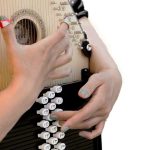 AutoharpApril 4, 2024Where Is the Best Place to Buy an Autoharp? Your Top Picks Reviewed
AutoharpApril 4, 2024Where Is the Best Place to Buy an Autoharp? Your Top Picks Reviewed AutoharpApril 4, 2024How Does the Autoharp Work? – Unveiling Its Melodic Secrets
AutoharpApril 4, 2024How Does the Autoharp Work? – Unveiling Its Melodic Secrets

